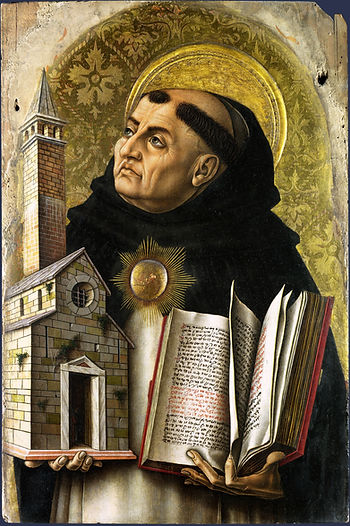St Thomas Aquinas: Doctor of the Church and Lowly Servant of Christ
- Patrick Kornmeyer
- Jan 27, 2017
- 3 min read

St. Thomas Aquinas is considered to be one of the most brilliant thinkers that the Church has called her own. So much of his writing, however, is very technical and difficult for many to understand, and so when he indicates at the beginning of his most famous work, the Summa Theologiae, that it is written for “beginners,” this can raise some eyebrows and cause a feeling in us that he is operating at an impossibly high level of thought that, in the end, really doesn’t have that much to do with us or the faith that we seek to live out in our daily lives.
It is important to remember, however, that what happens at the “highest” levels of thought has a direct influence on the “concrete” existence of things that we encounter. It is like a marionette—the puppet is controlled only by the operation of the higher hands that the strings are attached to. In like manner, what we believe in the concrete (and thus how we live and pray) is often worked out in the “abstract” — that which might seem a little above us.
Take, for example, Aquinas’ teaching on the real presence of Christ in the Eucharist, a doctrine called by the name transubstantiation. This means that there is a “transfer” of substance—the substance of bread goes away, as it were, and in its place comes the Body of Christ. But it seems that bread remains. The Host look
s like bread and tastes like bread. Therefore it’s still bread, right?
Not exactly. To understand what happens on the altar, Aquinas points out the difference between “substance,” or what a thing is, and “accidents,” which are how a thing appears to us. We come to know the substance through its accidents. For example, I am a human substance, but I have accidental qualities that make me unique. For instance, I have brown hair, brown eyes, white skin, I am six feet tall, and so forth. My accidents can change without me ceasing to be who I am. If I grow another two inches, for instance, I am not a different being from who I was before. Rather, that accident changed in the substance, while the substance remained the same — I am two inches taller but I am still the same Patrick.
In the Eucharist, the opposite takes place. The substance changes—bread into Christ’s Body—yet the accidents (of the bread) remain. This is the only time when this happens, and so it is rightly called a miracle. What appears to be bread in its accidents is truly the Body of Christ in substance, with none of the proper accidents of Christ.
Imagine what would happen if just one of the accidents were swapped out one for the other. For example, place. The proper accident of place for Christ is in heaven, at the right hand of the Father. The proper accident for the Host is on the altar in this particular church. If, at the moment of consecration, transubstantiation took place, but it took on Christ’s accident of place, the Host would immediately disappear from the priest’s hands and would appear in heaven, at the right hand of the Father. However, since all of the proper accidents of bread remain, there can be many Hosts, in many tabernacles, but only one Christ.
This is the reason why it is not correct to say that we Catholics “worship bread.” What really happens is Christ “draws the bread to himself,” just as he drew human flesh to himself in the Incarnation. Yet he chooses to remain “hidden” behind the appearances of bread, which is really out of consideration for us humans. If we were to see him in the fullness of his divine glory, our feeble, earthly humanity would not be able to stand it (see Exodus 33:20). As St. Thomas Aquinas says in his famous hymn Tantum Ergo Sacramentum: Praestet fides supplementum sensuum defectui (faith for all defects supplying, where the feeble senses fail).

Patrick Kornmeyer is from Northville, Michigan, and is currently pursuing a Master’s degree in theology at Franciscan University in Steubenville, Ohio, after receiving a Bachelor’s degree in history and philosophy.



































コメント